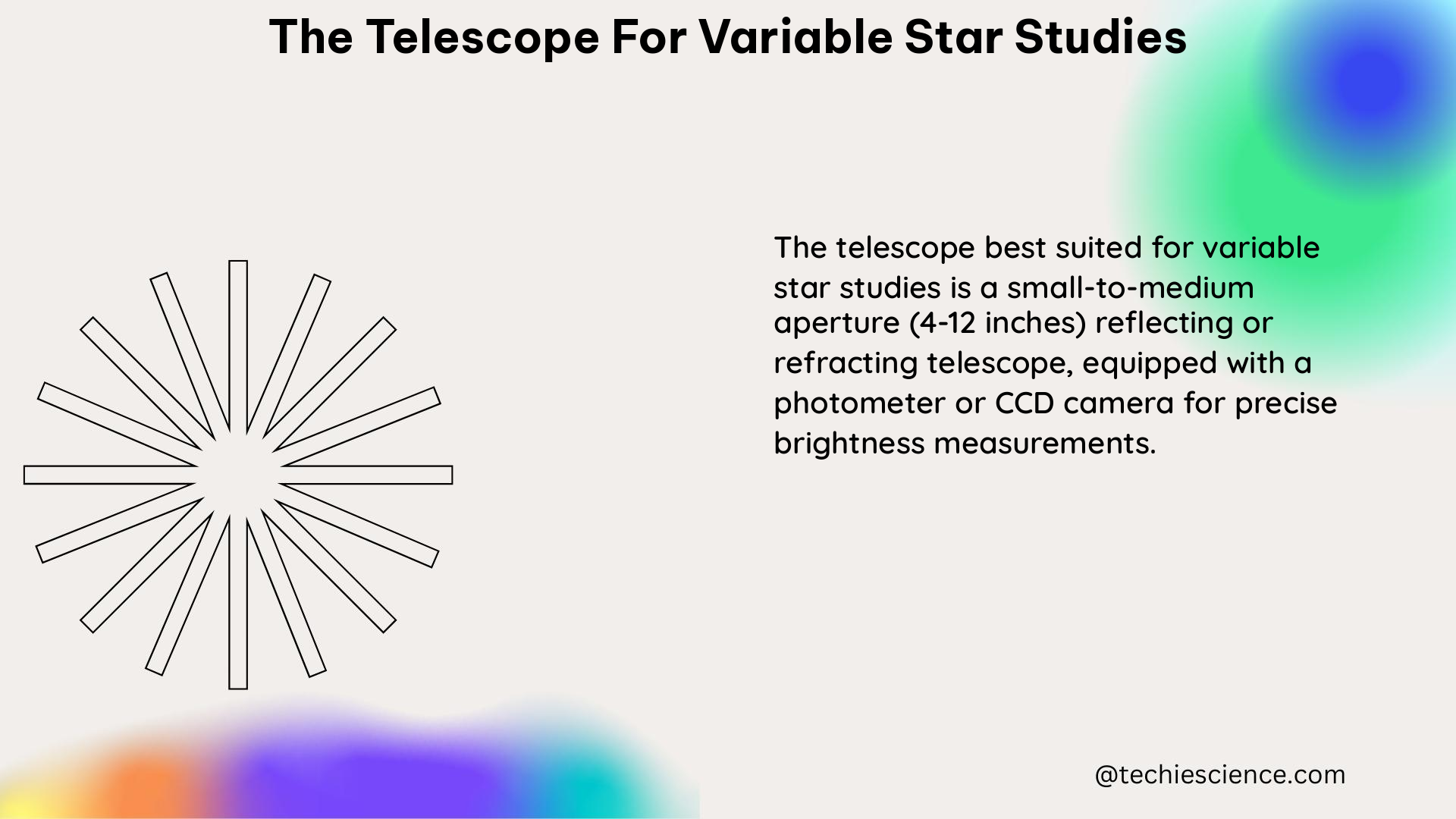The study of variable stars, celestial objects that exhibit fluctuations in brightness over time, requires specialized telescopes with specific technical specifications. These telescopes must be capable of accurately measuring the magnitude and period of variable stars, which are crucial parameters in understanding the underlying physics of these dynamic celestial bodies.
Telescope Considerations for Variable Star Observations
When selecting a telescope for variable star studies, several key factors must be taken into account:
Aperture Size
The aperture size, or the diameter of the telescope’s primary mirror or lens, is a critical consideration. A larger aperture allows for the collection of more light, enabling the detection of fainter variable stars and providing better photometric precision. For variable star studies, a telescope with an aperture of at least 100mm is recommended, with larger apertures (e.g., 150mm) providing even greater sensitivity.
Focal Ratio
The focal ratio, or the ratio of the telescope’s focal length to its aperture, is another important factor. A faster focal ratio (e.g., f/2.2) can be advantageous for variable star photometry, as it allows for shorter exposure times and reduces the impact of atmospheric turbulence. However, very fast focal ratios may require larger secondary mirrors, which can reduce the effective aperture of the telescope.
Filters
The ability to use filters, particularly IR/UV blocking filters, is crucial for accurate photometry. These filters help to eliminate the effects of infrared and ultraviolet radiation, which can skew the measured magnitudes of variable stars. The Unistellar Equinox 2, for example, can accept such filters in front of the sensor, making it well-suited for variable star studies.
Tracking and Guiding
Precise tracking and guiding capabilities are essential for variable star observations, as any drift or movement of the target star during an exposure can introduce errors in the photometric measurements. Telescopes with equatorial mounts and advanced tracking systems, such as those with autoguiding functionality, are preferred for this type of research.
Sensor and Imaging Capabilities
The telescope’s sensor and imaging capabilities are also crucial. A high-quality CCD or CMOS sensor with low noise and high quantum efficiency can provide accurate and reliable photometric data. Additionally, the ability to capture images in RAW format, which preserves more information than compressed formats, can be beneficial for post-processing and data analysis.
Recommended Telescopes for Variable Star Studies

Based on the considerations mentioned above, two telescopes stand out as excellent choices for variable star observations:
Unistellar Equinox 2
The Unistellar Equinox 2 is a compact and versatile telescope that is well-suited for variable star studies. With a 114mm aperture and the ability to accept IR/UV blocking filters, it provides a good balance of light-gathering power and photometric accuracy. Its equatorial mount and autoguiding capabilities ensure precise tracking, while its CMOS sensor and RAW image capture support high-quality data acquisition.
Celestron Origin
The Celestron Origin is another option for variable star observations, with a larger 150mm aperture. Its fast focal ratio of f/2.2 allows for shorter exposure times, which can be beneficial for monitoring rapidly changing variable stars. However, the fast focal ratio may require a larger secondary mirror, potentially reducing the effective aperture. Additionally, the Origin only offers a nebula filter, and compatibility with other off-the-shelf filters may be limited.
Observing Techniques and Considerations
When observing variable stars, several key techniques and considerations must be taken into account:
Observing Sessions
Observing sessions should be planned around the period of the variable stars being studied. This ensures that the observations are timed to capture the full range of brightness variations, which is crucial for accurate period and magnitude determinations.
Comparison Stars
The use of carefully selected comparison stars is essential for accurate photometric measurements. These comparison stars should be of similar brightness and color to the variable star, and their magnitudes should be well-established in the literature or through previous observations.
Magnitude Estimation
Variable star observations typically involve estimating the apparent magnitude of the target star. This is done by comparing the brightness of the variable star to that of the comparison stars, using techniques such as the Pogson logarithmic scale or the Argelander method.
Period Determination
Determining the period of a variable star is a crucial step in understanding its underlying physics. This can be done through techniques such as Fourier analysis or phase-folding, which involve analyzing the patterns of brightness variations over time.
Physics Concepts
The study of variable stars involves several important physics concepts, including the magnitude scale, the period-luminosity relation, and the distance modulus. Understanding these concepts is essential for interpreting the observed data and drawing meaningful conclusions about the nature and properties of variable stars.
Conclusion
The study of variable stars requires specialized telescopes with specific technical specifications, including a large aperture, the ability to use IR/UV blocking filters, and precise tracking and guiding capabilities. The Unistellar Equinox 2 and the Celestron Origin are two excellent options that meet these requirements, providing the necessary tools for accurate and reliable variable star observations.
By understanding the key considerations in telescope selection, observing techniques, and the underlying physics concepts, astronomers and physics students can engage in the fascinating field of variable star studies, contributing to our understanding of the dynamic and ever-changing universe.
References:
– Variable Stars with the Kepler Space Telescope – AAVSO
– Variable stars – NASA/ADS
– Looking for a smart telescope for variable star photometry – AAVSO
– How to observe variable stars – BBC Sky at Night Magazine
– Understanding Variable Stars – ResearchGate

The lambdageeks.com Core SME Team is a group of experienced subject matter experts from diverse scientific and technical fields including Physics, Chemistry, Technology,Electronics & Electrical Engineering, Automotive, Mechanical Engineering. Our team collaborates to create high-quality, well-researched articles on a wide range of science and technology topics for the lambdageeks.com website.
All Our Senior SME are having more than 7 Years of experience in the respective fields . They are either Working Industry Professionals or assocaited With different Universities. Refer Our Authors Page to get to know About our Core SMEs.